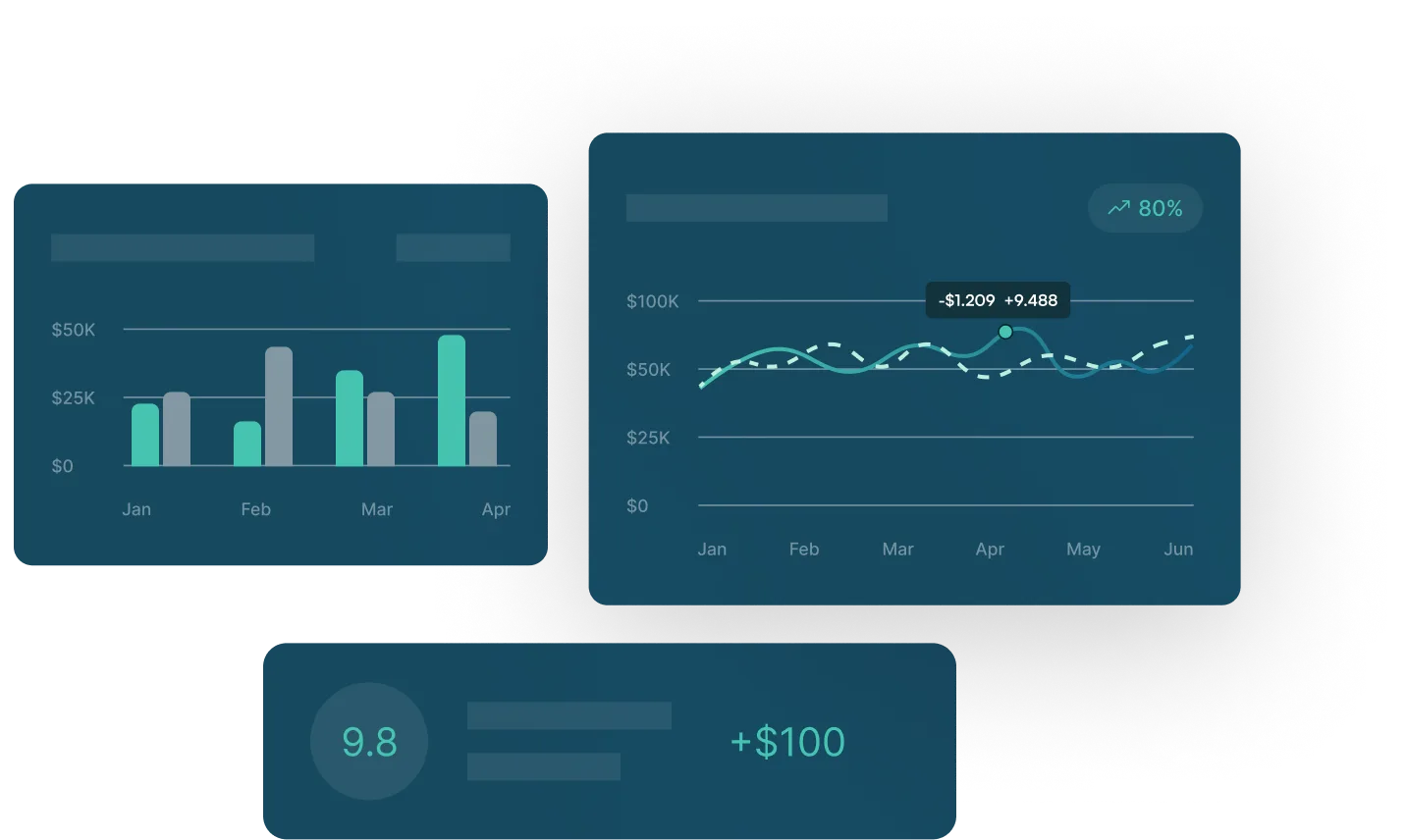International Hedge Accounting Treatment: Key Differences


As a U.S. company, your accounting team might not realize that hedge accounting under U.S. GAAP may not satisfy local international regulations and requirements. So, just as you get a handle on ASC 815 cash flow hedge accounting in the U.S., your international subsidiaries ask you to comply with IFRS 9 for local statutory purposes.
It’s becoming more and more common for corporate accounting teams to designate foreign currency cash flow hedges under both U.S. GAAP for consolidated financial statements and international GAAP for local purposes.
Why International Compliance is Needed
Companies might require reporting under IFRS 9 for several reasons.
It could be that local financial statements are required for credit facilities, and hedge accounting is desirable for presentation purposes. It could be that the tax department requires IFRS compliance for statutory reporting. It could be that foreign competitors present under IFRS, and the company’s adoption makes comparisons easier for investors. Or, perhaps the U.S. entity has an international parent or investor that requires IFRS reporting.
Differences in Designation
Many of the hedge accounting requirements are the same under both U.S. and International GAAP. But it’s important to realize that IAS 39 and ASC 815 were much closer together 3 years ago, but IFRS 9 and then ASU 2017-12 drove substantial differences between U.S. and international GAAP.
If your company is designating a cash flow hedge under both U.S. and International GAAP, we recommend using two designation documents. While similar, they differ enough to warrant their own set of designations.
For example, while ineffective amounts are no longer a concept under U.S. GAAP, the measurement and accounting characteristics must be observed under IFRS 9. Under ASC 815, a company can apply the “matched terms” strategy, which assumes zero ineffectiveness, but this concept does not exist under IFRS 9. When excluding time value under U.S. GAAP, a company impacts earnings over the life of the derivative, but excluded time value is held in OCI and reclassified to income with the hedged item under IFRS 9. In fact, excluding time value under IFRS 9 gives similar results as including time value under U.S. GAAP, leading some companies to elect different time value treatment with the separate designations.
Also, some designations are permitted under IFRS 9, such as hedging an acquisition or hedging “netted” transactions, while U.S. GAAP still forbids both concepts. These differences could lead to taking hedge accounting internationally but failing to qualify as such in the U.S.
Finally, effectiveness testing is different under both standards. Under IFRS 9, a qualitative assessment evaluating the economic relationship, the impact of credit on that relationship, and the hedge ratio for both prospective and retrospective testing are acceptable. Under ASC 815, the only qualitative test is an affirmation that all critical terms of the hedged item match the derivative or the prospective effectiveness test must be quantitative, while subsequent tests can qualitatively assert no changes have put the initial assessment at risk. Also, the test timing may be different. IFRS requires contemporaneous effectiveness testing while U.S. GAAP requires qualitative testing and quantitative test protocols to be documented contemporaneously, but the quantitative testing does not need to be completed until the quarter-end or before the hedge relationship ends — whichever comes first.
Differences in Accounting
While some designation documentation requirements differ, the actual accounting for hedges under both standards are much different. This means you’ll need a system or service that can handle both types of accounting.
For example, in the U.S., when excluding time value, the change in time value of the derivative is recorded to income based on a straight-line or market change approach each period over the life of the derivative. Under IFRS 9, the forward element related to the hedged item is deferred to Other Comprehensive Income (OCI) and reclassified into income with the hedged item. Under U.S. GAAP, OCI is reclassified only to income. But under IFRS, if the hedged item is recorded first in the balance sheet, the effect of a hedge must become part of the cash flow hedged item’s cost basis on the balance sheet (e.g. inventory or deferred revenue) and subsequently reclassified to income with the hedged item. Measuring ineffectiveness has been eliminated on cash flow hedges under U.S. GAAP but it still must be measured and recorded to earnings under IFRS 9.
Conclusion
International hedge accounting treatment has become more common in the U.S. than expected. Local accounting expectations, tax requirements and presentation purposes drive international hedge accounting adoption. The designation requirements, as well as the accounting, differ enough to warrant two sets of documentation and journal entries. Companies that need both types of hedge accounting treatment benefit from technology and services that can maintain dual sets of designations and journal entries.
International Hedge Accounting Treatment: Key Differences
As a U.S. company, your accounting team might not realize that hedge accounting under U.S. GAAP may not satisfy local international regulations and requirements. So, just as you get a handle on ASC 815 cash flow hedge accounting in the U.S., your international subsidiaries ask you to comply with IFRS 9 for local statutory purposes.
It’s becoming more and more common for corporate accounting teams to designate foreign currency cash flow hedges under both U.S. GAAP for consolidated financial statements and international GAAP for local purposes.
Why International Compliance is Needed
Companies might require reporting under IFRS 9 for several reasons.
It could be that local financial statements are required for credit facilities, and hedge accounting is desirable for presentation purposes. It could be that the tax department requires IFRS compliance for statutory reporting. It could be that foreign competitors present under IFRS, and the company’s adoption makes comparisons easier for investors. Or, perhaps the U.S. entity has an international parent or investor that requires IFRS reporting.
Differences in Designation
Many of the hedge accounting requirements are the same under both U.S. and International GAAP. But it’s important to realize that IAS 39 and ASC 815 were much closer together 3 years ago, but IFRS 9 and then ASU 2017-12 drove substantial differences between U.S. and international GAAP.
If your company is designating a cash flow hedge under both U.S. and International GAAP, we recommend using two designation documents. While similar, they differ enough to warrant their own set of designations.
For example, while ineffective amounts are no longer a concept under U.S. GAAP, the measurement and accounting characteristics must be observed under IFRS 9. Under ASC 815, a company can apply the “matched terms” strategy, which assumes zero ineffectiveness, but this concept does not exist under IFRS 9. When excluding time value under U.S. GAAP, a company impacts earnings over the life of the derivative, but excluded time value is held in OCI and reclassified to income with the hedged item under IFRS 9. In fact, excluding time value under IFRS 9 gives similar results as including time value under U.S. GAAP, leading some companies to elect different time value treatment with the separate designations.
Also, some designations are permitted under IFRS 9, such as hedging an acquisition or hedging “netted” transactions, while U.S. GAAP still forbids both concepts. These differences could lead to taking hedge accounting internationally but failing to qualify as such in the U.S.
Finally, effectiveness testing is different under both standards. Under IFRS 9, a qualitative assessment evaluating the economic relationship, the impact of credit on that relationship, and the hedge ratio for both prospective and retrospective testing are acceptable. Under ASC 815, the only qualitative test is an affirmation that all critical terms of the hedged item match the derivative or the prospective effectiveness test must be quantitative, while subsequent tests can qualitatively assert no changes have put the initial assessment at risk. Also, the test timing may be different. IFRS requires contemporaneous effectiveness testing while U.S. GAAP requires qualitative testing and quantitative test protocols to be documented contemporaneously, but the quantitative testing does not need to be completed until the quarter-end or before the hedge relationship ends — whichever comes first.
Differences in Accounting
While some designation documentation requirements differ, the actual accounting for hedges under both standards are much different. This means you’ll need a system or service that can handle both types of accounting.
For example, in the U.S., when excluding time value, the change in time value of the derivative is recorded to income based on a straight-line or market change approach each period over the life of the derivative. Under IFRS 9, the forward element related to the hedged item is deferred to Other Comprehensive Income (OCI) and reclassified into income with the hedged item. Under U.S. GAAP, OCI is reclassified only to income. But under IFRS, if the hedged item is recorded first in the balance sheet, the effect of a hedge must become part of the cash flow hedged item’s cost basis on the balance sheet (e.g. inventory or deferred revenue) and subsequently reclassified to income with the hedged item. Measuring ineffectiveness has been eliminated on cash flow hedges under U.S. GAAP but it still must be measured and recorded to earnings under IFRS 9.
Conclusion
International hedge accounting treatment has become more common in the U.S. than expected. Local accounting expectations, tax requirements and presentation purposes drive international hedge accounting adoption. The designation requirements, as well as the accounting, differ enough to warrant two sets of documentation and journal entries. Companies that need both types of hedge accounting treatment benefit from technology and services that can maintain dual sets of designations and journal entries.

See GTreasury in Action
Get connected with supportive experts, comprehensive solutions, and untapped possibility today.































.png)







.png)












.jpeg)

.jpeg)


.jpeg)







.jpeg)

.jpeg)





.jpeg)

.jpeg)

.jpeg)








.jpeg)



.jpg)





